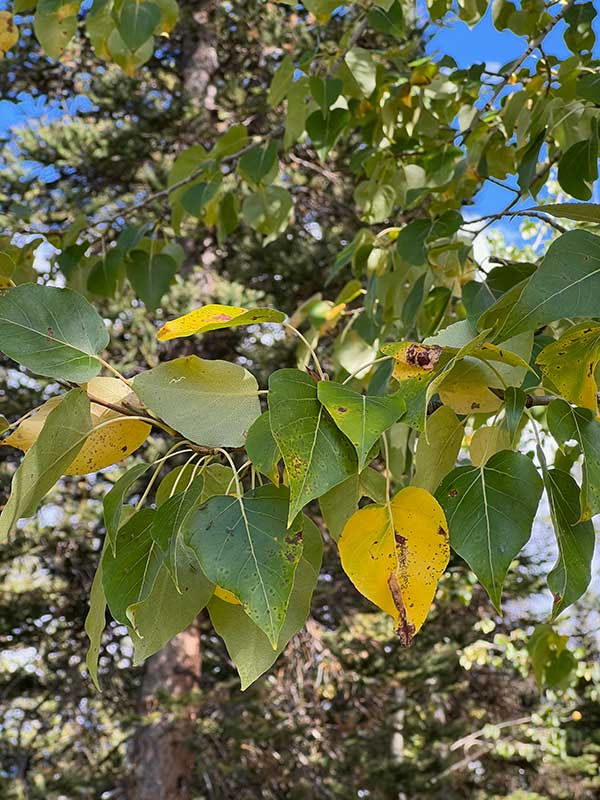Populus trichocarpa / black cottonwood
- conical tree
- heart or arrow-head shaped leaves; pointy tips
- inflorescences are red or brownish catkins in early spring
- cotton-y fruits disperse in early summer
Like other trees, the leaves of black cottonwood are probably the part most often used for identification. In this case, they are heart shaped, or arrow-head shaped. The margins are wavy (crenate) and the tips are pointy (acute). The upper surfaces are glossy and dark green; the undersides are lighter, grey-green. Rarely the leaves can be as much as a foot long on very vigorous young trees or stump sprouts, but 3 or 4 inches is typical.
In winter and early spring, the conical buds are long, narrow and sticky. They release a strong “balsam” scent when they open.
Black cottonwood flowers, like all those in the Salicaceae, are catkins. Male catkins are a deep red color; females are shorter and more brownish. The pollen is wind dispersed and definitely allergenic. And like other poplars, the fruits are white fuzzy cottony things that float around in the air and pile up on roadsides. They are not allergenic. The “cotton” is released about the time that grasses start shedding their allergenic pollen.
The seeds, again like other Salicaceae, have very short viability. Mostly, reproduction is clonal. It can be quite aggressive, spreading quickly by root suckers.
Black cottonwood bark is also distinctive. It is grey and covered with reddish lenticels. In older trees, it is thick and deeply fissured (“cracked”). Unlike the wood, which is rather wimpy, the bark can get hard enough to cause sparks to fly when cut with a chainsaw. Overall, the crown is more or less conical and quite dense. Spur shoots are common.
Other than in plantations, black cottonwood is mostly found in riparian conditions.
Interesting bits – Although in Wydaho, this is not a very common species, elsewhere it is grown for pulpwood and for making plywood. Paper made from it is used in high end books, magazines and catalogs. That, plus the fact that it reaches reproductive maturity in 4-6 years, has made a poplar breeding program possible. It also led to an early effort to sequence its genome; in fact it was only the third plant to be sequenced (after Arabisopsis and rice). Of course anytime you go looking closely, you find weirdness. Like, there are significant genetic differences between the roots, and the leaves and branches on a single tree. In fact, there is as much variation within an individual as there is between unrelated trees.
Beyond that, black cottonwood is a nesting tree for woodpeckers (in cavities). Other birds build nests in the upper branches. Beavers are fond of it for food and dam-building. And like other members of the Salicaceae, it contains high levels of salicylic acid and has been used as a natural pain reliever.


